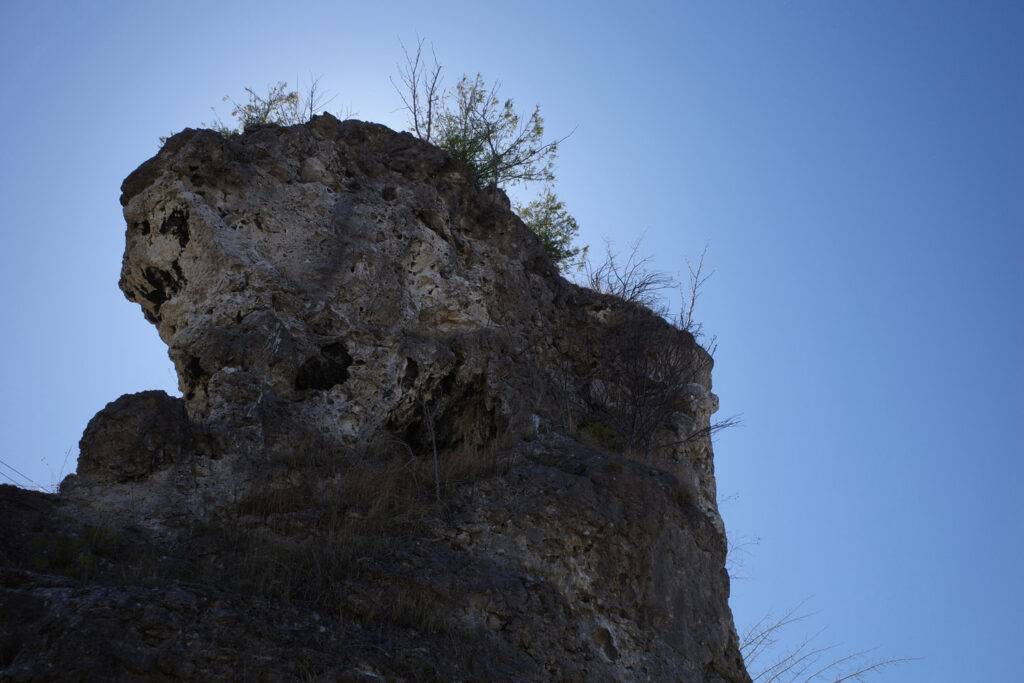St. Ignace — What in the world are sea stacks? Some kind of utilitarian architecture you might find on a Norwegian fjord? A card game sailors used to play below deck on dimly lit ships in the late 1800s?
Sea stacks are ancient rock formations, remnants of the prehistoric past. Defiant and craggy, they are obstinate relics. They stick straight up and out of the rough water. They line the rocky shore. These old stone remnants are found in Australia, Scotland, Italy, Portugal, and up in U.P., just across the bridge, in St. Ignace.

Before Lake Michigan, Lake Huron, and Lake Superior, there was a prehistoric greatest lake. Lake Huron, Lake Michigan, and Lake Superior were all one within the massive Lake Algonquin during the last ice age. The Laurentian glacier had retreated northward and a massive body of water was left in its wake. About 11,000 years ago, the tip of the Lower Peninsula was under water, the east side of the U.P. was submerged, and the Georgian Bay stretched even farther into Ontario.
Slowly, Lake Algonquin began to shrink. The previously submerged regions of Michigan became the coast we know today, the islands we visit on vacation, and the beaches we lie on in summer. Over the centuries, winds blew, water receded, and erosion left these limestone sea stacks as stoic reminders of the past.
There are three sea stacks in St. Ignace and the surrounding area. St. Anthony’s Rock is right downtown. It pokes out of the side of a steep hill next to a long parking lot. The jagged stone faces the backs of stores and restaurants.
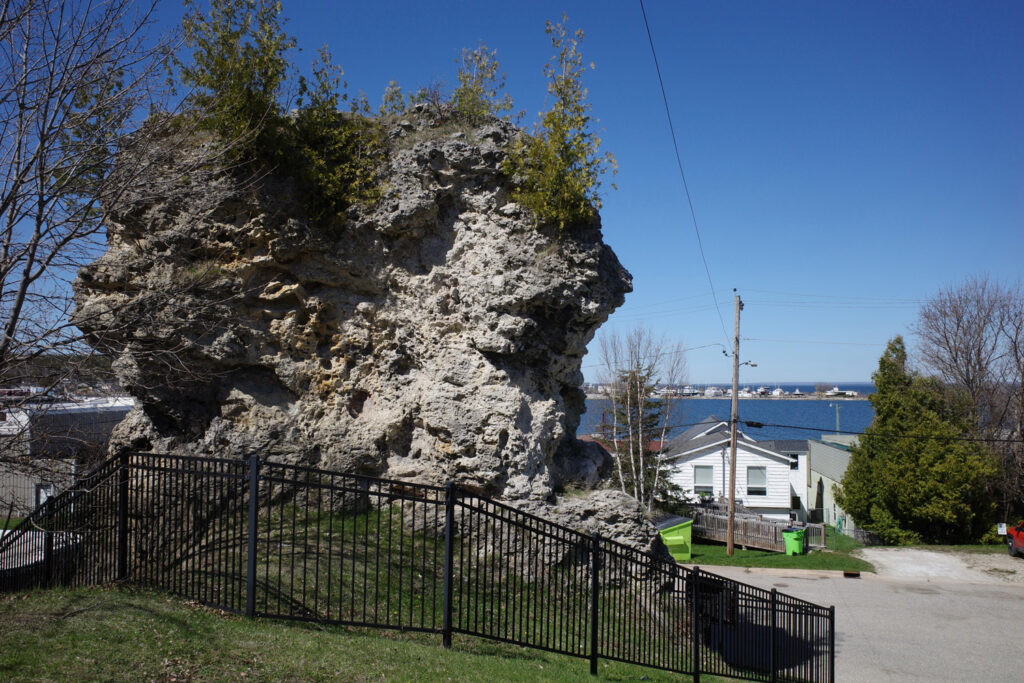
There are weeds, little twigs, and shrubs growing out of the side. Pockmarked and misshapen, it feels ancient. From the top of the hill next to St. Anthony’s Rock, you can see Lake Huron. The ferry coming in from Mackinac Island, the dark blue water, and little waves. There’s no fanfare, no museum, no gift shop. There’s just St. Anthony’s Rock, this old sea stack on a back street, looking out over the town and the harbor.
Castle Rock is a huge sea stack three miles north of St. Ignace. Driving north along I-75, you can’t miss it. Towering above the land is the old stone skyscraper. There’s a platform on top where visitors pay a dollar to look out over Lake Huron. CASTLE ROCK is painted on the side of a ramp leading out to the platform towering nearly 200 feet above the landscape. There’s a statue of Paul Bunyan and his blue ox in the shadow below.
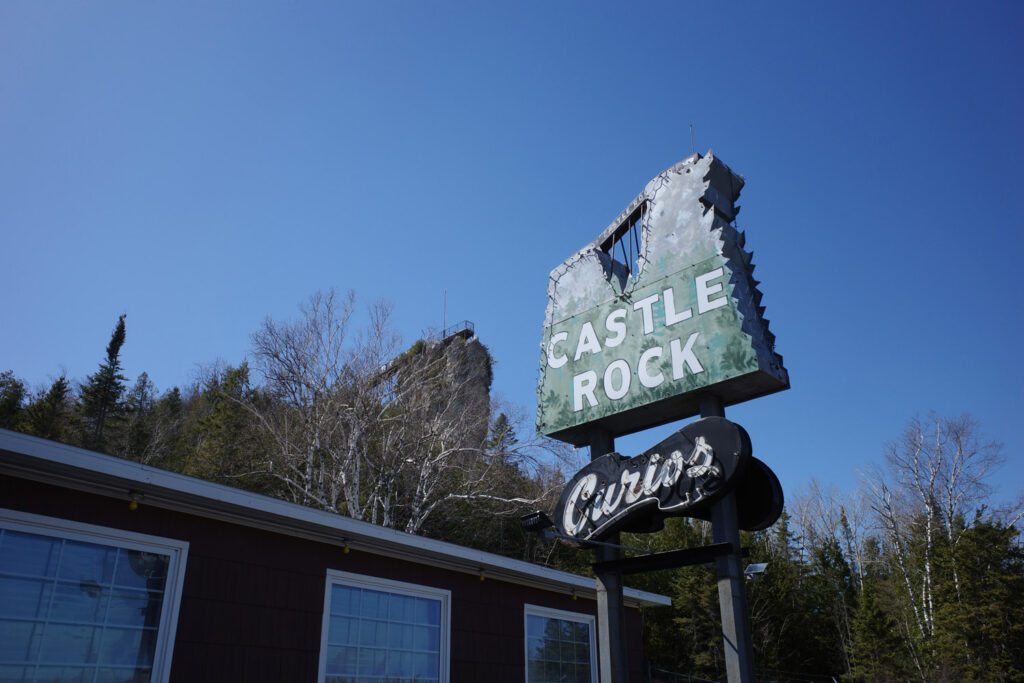
Castle Rock is a tourist attraction. A real U.P. kind of tourist attraction. A pull-off-the-road-for-half-an-hour-in-the-middle-of-July-because-the-kids-are-about-to-mutiny kind of tourist attraction. There’s a gift shop where you pay the fee before you climb the great sea stack. They also sell trinkets, candy, and an array of other tourist-trap classics.
They were closed when we arrived. The windows were dark, and the doors were locked. An old truck painted in desert-storm camo pulled up to the parking lots as I was looking in the windows. It was a young guy and girl from Gaylord. We exchanged confused lamentations about the fact that we couldn’t get up on top of the rock on such a beautiful, clear day. The Ojibwas called it Pontiac’s Lookout.
There’s a third sea stack about seven miles west of St. Ignace in Gros Cap. The sea stack in Gros Cap is elusive. It’s not an attraction, and it’s not searchable on Google Maps. The only proof that it’s there are black and white photos and a marker on an old map of sea stacks at the straits.
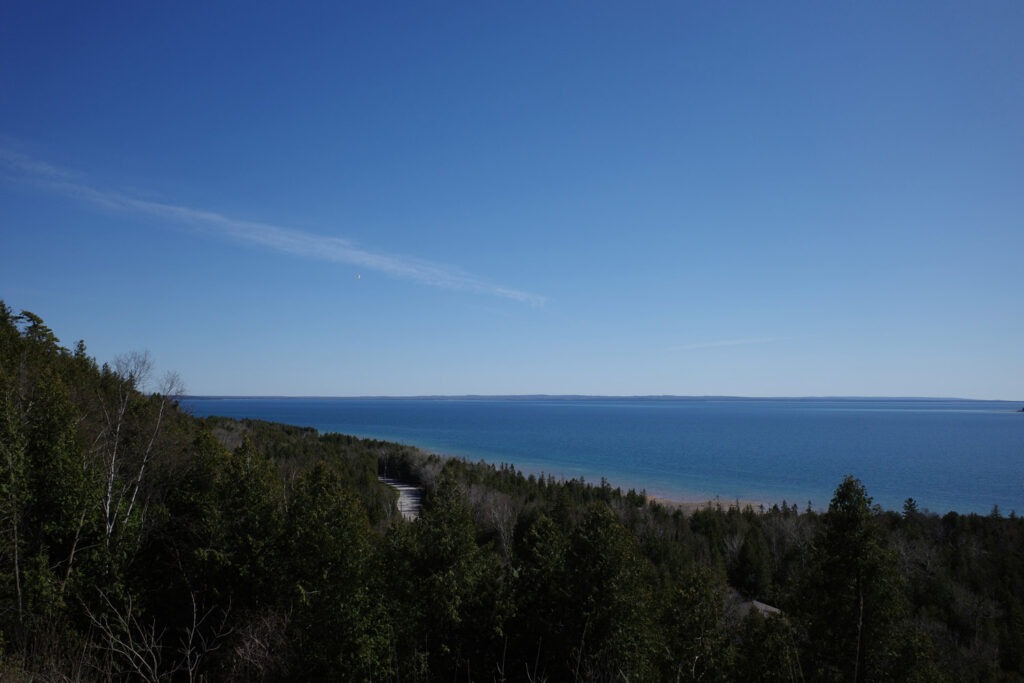
We drove along Gros Cap Road for about 30 minutes, trying to find the mysterious Gros Cap sea stack. Slowing down and looking carefully, we thought we saw a sandy stone pillar rising from the trees a few times, but we were mistaken. While the hunt for the Gros Cap sea stack was unfruitful, it wasn’t all bad. Gros Cap Road runs right along Lake Michigan and on a breezy day in May, a slow drive along the lake is a gift itself.
Across the straits on Mackinac Island, there are more sea stacks to be found. Devil’s Kitchen, Arch Rock, Skull Cave, Sugar Loaf, and Friendship’s Altar. Around the perimeter of Mackinac Island, these old cliffs look over the water. In the past, they towered over the American Indians and their canoes, and in the present, they watch over tourists, full of fudge, pedaling their way around the island on bikes rented for $11 an hour.
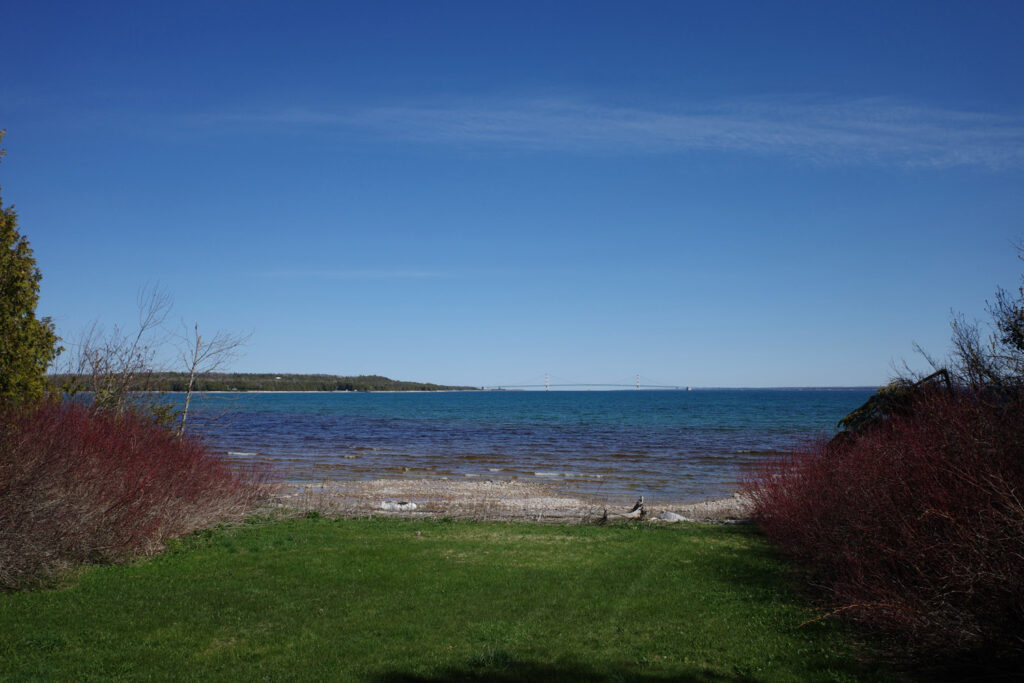
Sea stacks are old. They aren’t sublime beauty or art; they are ruins of natural history. Prehistoric, coarse. There’s something oddly perfect about the fact that St. Anthony’s Rock stands unceremoniously next to a parking lot on a back street.
This tall nubby stone, it’s just part of the land here. It was there before us, and now it’s here with us. Seemingly out of place in our newly built environment, sea stacks are a stubborn reminder. There was a world before us. Lake Algonquin was there before us. The sea stacks were there before us and will be there when we are gone.
O.W. Root is a writer based in Northern Michigan, with a focus on nature, food, style, and culture. Follow him on X at @NecktieSalvage.
